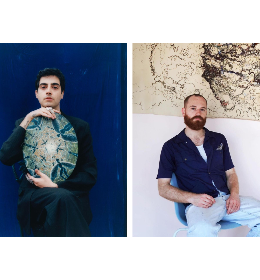Peggy Guggenheim: Art Addict, by director Lisa Immordino Vreeland, traces a turbulent, scandalous and avant-garde journey from start to finish. Born into a fabulously wealthy American family in Philadelphia in 1898, her rejection of societal norms and expectations at a young age would foreshadow the envelope-pushing and, at times, scandalous life and career she forged for herself in New York and across Europe.
Unconforming yet glamorous
The film relies heavily on recordings - over thirty hours’ worth - that Vreeland found in the basement of Jacqueline Bograd Weld, Guggenheim’s former biographer. Snippets of audio from the recordings are sprinkled throughout and reveal a quick-witted, erudite, frank and self-deprecating woman who fought hard to fit in - but never really did. Yes, the travels, the palazzos, the luminaries, the notoriety and the art imbue a certain retrospective glamor to her storied existence, but it’s clear that a vulnerable and troubled spirit lived beneath that seemingly thick skin of hers.
At one point, in a rare moment of gravity, Guggenheim admits, “I had a very sad life, I think.”
As familiar as many of us are with her story of artistic discovery and patronage, it’s really quite astounding to behold the gamut of artists she met, discovered, nurtured and exhibited. Keeping the canon of ‘important’ artists from the early to mid twentieth century in mind, Guggenheim seemed to know absolutely everyone. She was an advocate for Surrealism when no one would take it seriously, opened the lines of artistic exchange between Europe and the US, evacuated Jewish artists from an increasingly Nazi-occupied Europe, and created one of the most important collections of modern art in the world. (The collection, now housed in Guggenheim’s museum in Venice, is composed of 125 works, all purchased for the unimaginably paltry sum of $40,000). Her championing of Jackson Pollock - whom she also supported financially - was perhaps her proudest patronage. And her New York gallery, Art of This Century, gave many artists their first gallery shows (Motherwell, Rothko, Pollock and Hoffman among them).
A woman of action
A self proclaimed nymphomaniac, and the “enfant terrible of the Guggenheim family,” she went through lovers as fast as she could. Indeed, for her, sex and art went hand in hand. Though she may not have considered herself a feminist per se, the independent, intellectual and corporeal pursuits that color her biography tend to foreshadow the modern liberated woman. When leaving the theater, it’s hard not to find yourself inspired and truly impressed by all she managed to accomplish, despite odds that were often against her.
Though the film may drag at times, it is quite densely packed with anecdotes and imagery. During a talkback at the end of the screening, Vreeland admitted there is “almost too much” to cover. One thing she mentions that did not make it into the film, was the idea that at a “certain point [Guggenheim] felt like she wasn’t given what was due to her.” And that she “wasn’t recognized” by certain artists throughout her life. Indeed, it seems many of the artists she considered friends took advantage of a woman seeking inclusion and acceptance. Perhaps this added to the seemingly troubled, yet exciting life of “the midwife of modern art.” If, as many in the film suggest, Guggenheim’s life composed a work of art in itself, it just may ultimately be a rather sad portrait of a woman far ahead of her time, looking for a home.










